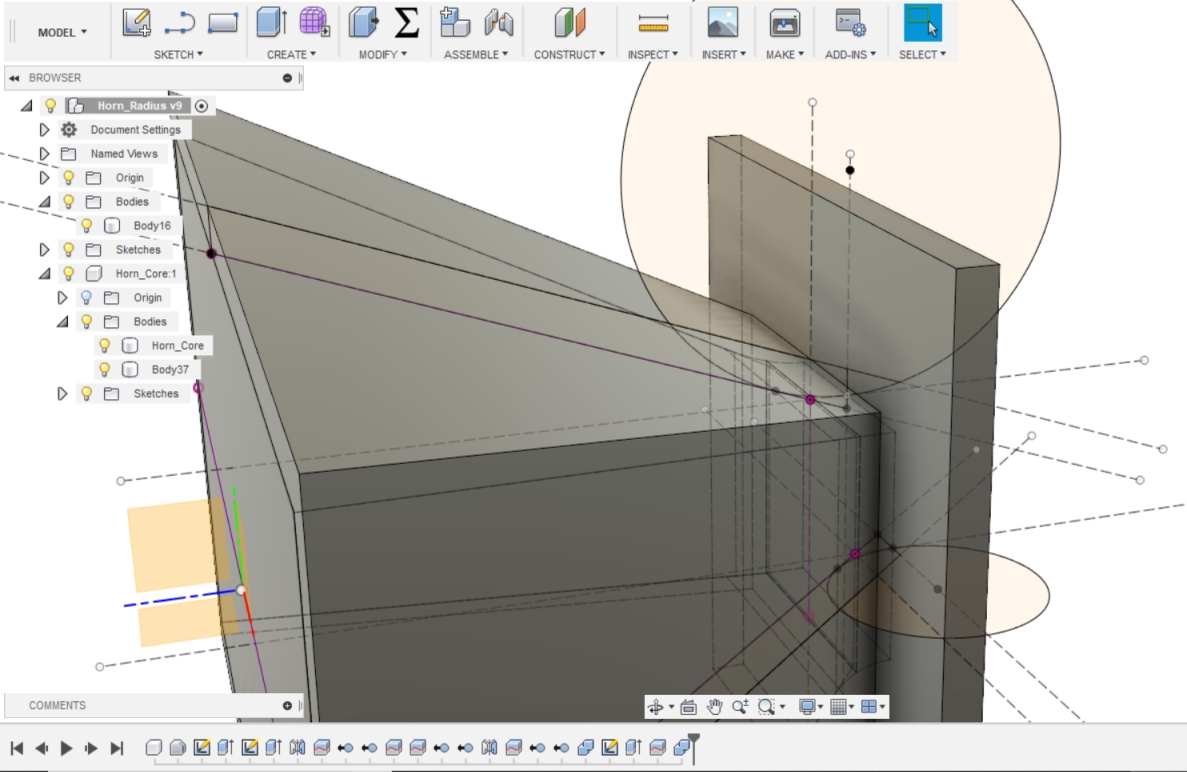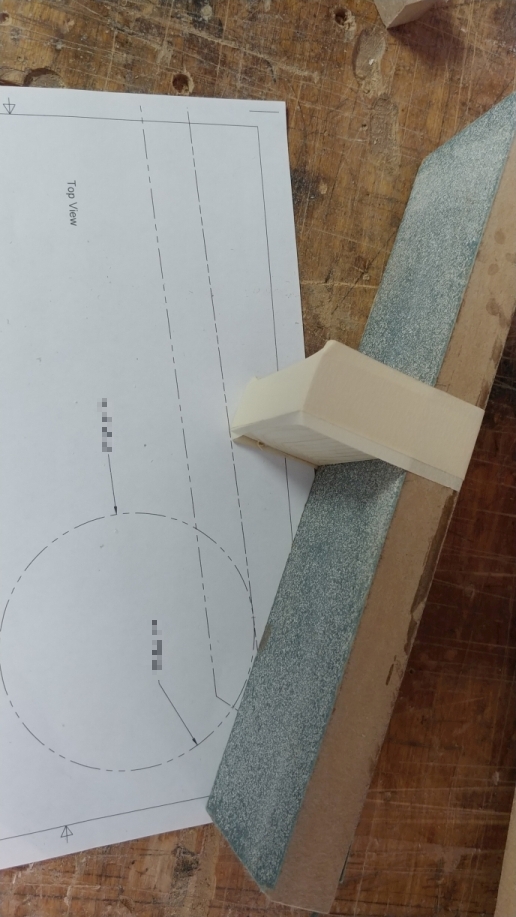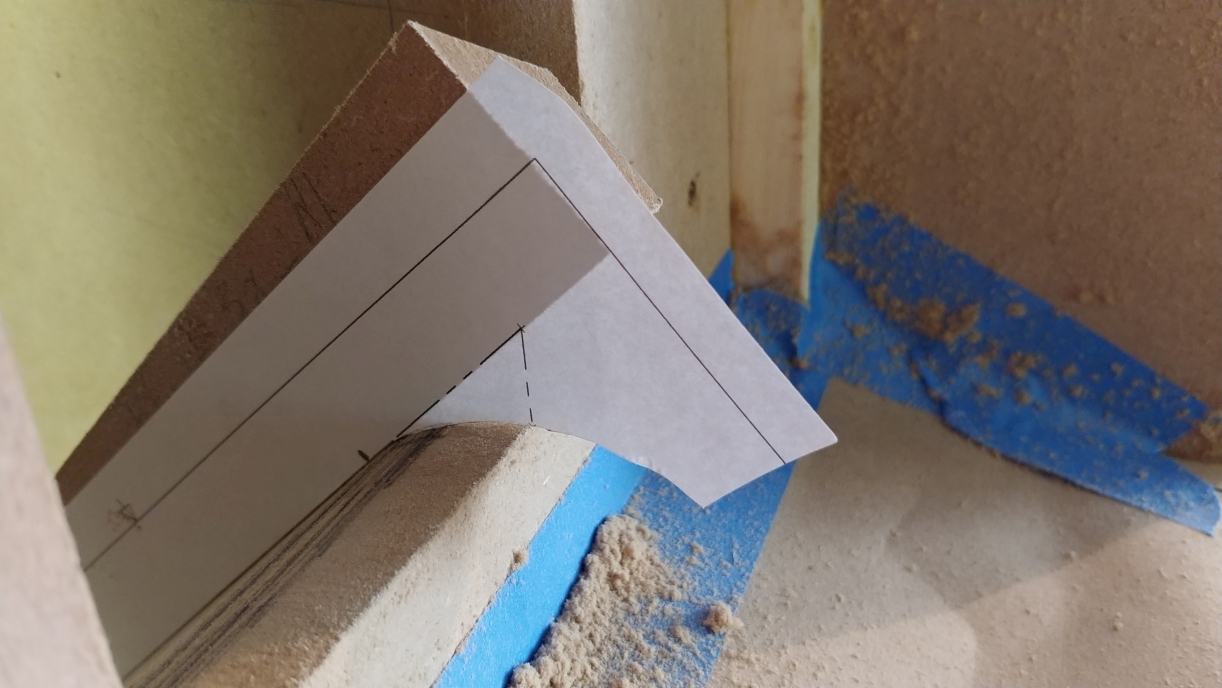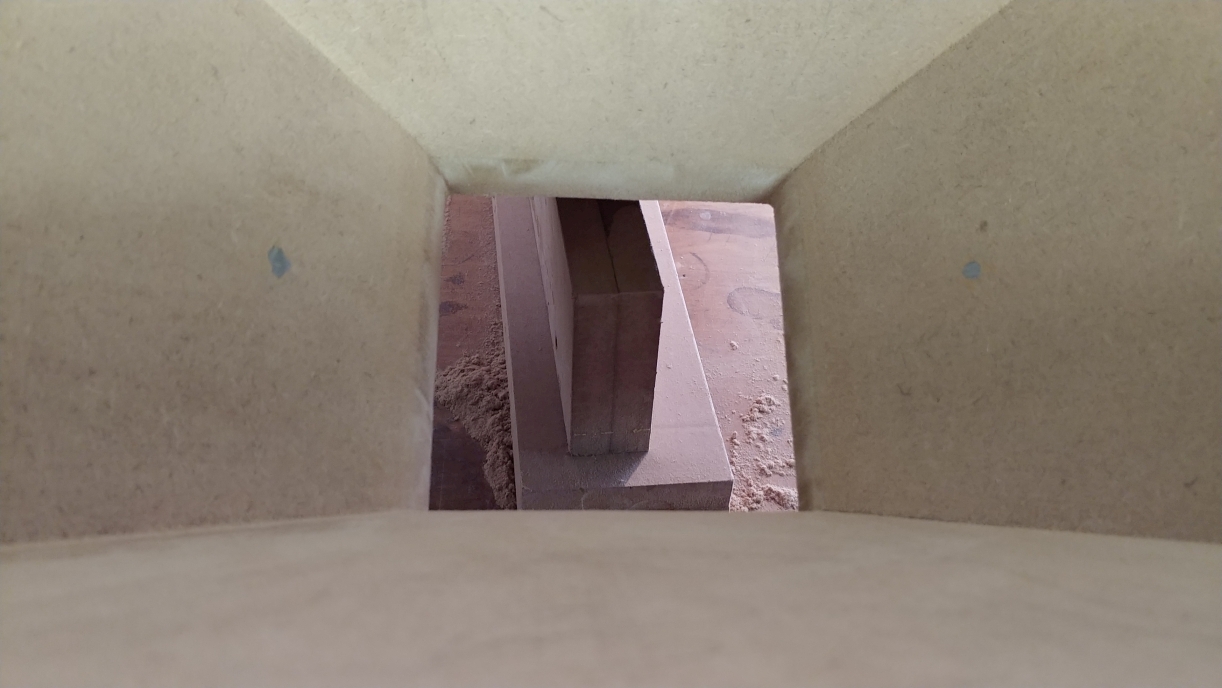|
Home » Sponsored » Pi Speakers » Build Thread: 2Pi Towers, 6Pi Corner horns (and possibly a sub and center) (Building some Pi Speakers)
| Re: Build Thread: 2Pi Towers, 6Pi Corner horns (and possibly a sub and center) [message #88444 is a reply to message #88057] |
Sun, 15 July 2018 18:24   |
 joshua43214
joshua43214
Messages: 35
Registered: October 2016
Location: USA
|
Baron |
|
|
Dealing with the throat of the flare is something I spent quite a bit of time thinking about. I read about every paper published for free on horn theory, and learned a huge amount in the process. It seemed self-evident that having sharp edges where sound entered the horn would not be a good thing. This turned out to be a subject that others have done some research on. In the end, I decided to be guided by a whitepaper by Charles E. Hughes for Peavey called "The Quadratic Throat Waveguide." Reading this paper alongside Wayne's own whitepaper on horn theory will probably all one needs to know about horns in general unless you want to take the deep dive into it.
In short, the paper contends that the transition from the backside of the horn, to the inside of the horn should be a circular arc, whose edges are tangent to the back and side faces. The paper goes onto contend that the corners where the sides meet the top/bottom of the horn should be a parabolic profile whose origin is relative to the width of the side at any given point. The first part is simple enough, and can be done easily with a compass, the second part requires real working knowledge of calculus, and implementing will be a nightmare. Fortunately, we are making a 6Pi Cornerhorn, not a Peavey horn. My other research showed that above a certain size diffractions inside of horn become inaudible even when measurable, and that standing waves inside the horn are a far bigger issue. The 6Pi midhorn is just over that threshold for size.
I honestly do not know how much of a difference this will make verses just eyeballing a radius, but it make me sleep better, which makes my girl friend happy, and a happy girl friend makes me happy 
Returning to Fusion 360, I exported the midhorn core to a new design, and created a model just for the arcs.

I then created a shop drawing from the new model and printed it out.
I trimmed a piece of scrap to be equal to the distance from the front of the driver mount to the tangent line of the arc, and scribed the lines where the arc should end on the inside of the flare. The extra material I left in the cutout makes it easier to support the block for marking.

To keep everything nicely consistent, I taped scrap to my sanding block so that it would approximate the arc. techinically, this will form an involute, but they are very similar in shape.

I then glued the paper to some scrap, cut off the excess paper, and used it to check my progress as I went.

This was another unfun job, but it went faster than I expected.

Next Up: the back cover and starting the crossover boxes
|
|
|
|
 |
|
Build Thread: 2Pi Towers, 6Pi Corner horns (and possibly a sub and center)
|
 |
|
Re: Build Thread: 2Pi Towers, 6Pi Corner horns (and possibly a sub and center)
|
 |
|
Re: Build Thread: 2Pi Towers, 6Pi Corner horns (and possibly a sub and center)
|
 |
|
Re: Build Thread: 2Pi Towers, 6Pi Corner horns (and possibly a sub and center)
|
 |
|
Re: Build Thread: 2Pi Towers, 6Pi Corner horns (and possibly a sub and center)
|
 |
|
Re: Build Thread: 2Pi Towers, 6Pi Corner horns (and possibly a sub and center)
|
 |
|
Re: Build Thread: 2Pi Towers, 6Pi Corner horns (and possibly a sub and center)
|
 |
|
Re: Build Thread: 2Pi Towers, 6Pi Corner horns (and possibly a sub and center)
|
 |
|
Re: Build Thread: 2Pi Towers, 6Pi Corner horns (and possibly a sub and center)
|
 |
|
Re: Build Thread: 2Pi Towers, 6Pi Corner horns (and possibly a sub and center)
|
 |
|
Re: Build Thread: 2Pi Towers, 6Pi Corner horns (and possibly a sub and center)
|
 |
|
Re: Build Thread: 2Pi Towers, 6Pi Corner horns (and possibly a sub and center)
|
 |
|
Re: Build Thread: 2Pi Towers, 6Pi Corner horns (and possibly a sub and center)
|
 |
|
Re: Build Thread: 2Pi Towers, 6Pi Corner horns (and possibly a sub and center)
|
 |
|
Re: Build Thread: 2Pi Towers, 6Pi Corner horns (and possibly a sub and center)
|
 |
|
Re: Build Thread: 2Pi Towers, 6Pi Corner horns (and possibly a sub and center)
|
 |
|
Re: Build Thread: 2Pi Towers, 6Pi Corner horns (and possibly a sub and center)
|
 |
|
Re: Build Thread: 2Pi Towers, 6Pi Corner horns (and possibly a sub and center)
|
 |
|
Re: Build Thread: 2Pi Towers, 6Pi Corner horns (and possibly a sub and center)
|
 |
|
Re: Build Thread: 2Pi Towers, 6Pi Corner horns (and possibly a sub and center)
|
 |
|
Re: Build Thread: 2Pi Towers, 6Pi Corner horns (and possibly a sub and center)
|
 |
|
Re: Build Thread: 2Pi Towers, 6Pi Corner horns (and possibly a sub and center)
|
 |
|
Re: Build Thread: 2Pi Towers, 6Pi Corner horns (and possibly a sub and center)
|
 |
|
Re: Build Thread: 2Pi Towers, 6Pi Corner horns (and possibly a sub and center)
|
 |
|
Re: Build Thread: 2Pi Towers, 6Pi Corner horns (and possibly a sub and center)
|
 |
|
Re: Build Thread: 2Pi Towers, 6Pi Corner horns (and possibly a sub and center)
|
 |
|
Re: Build Thread: 2Pi Towers, 6Pi Corner horns (and possibly a sub and center)
|
Goto Forum:
Current Time: Sat Apr 27 13:02:39 CDT 2024
|







